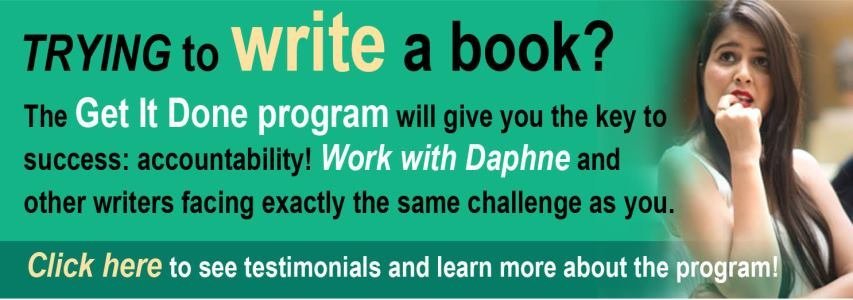Reading time: About 4 minutes
Don’t avoid the vulnerability of making decisions. Instead, learn how to deal with your analysis paralysis…
Most of us get a certain delicious pleasure when we hear rhymes.
- The Cat in the Hat
- One, Two, Buckle My Shoe
- Jack and Jill Went Up the Hill
- Analysis Paralysis
I hope that last one didn’t surprise you. While the first three are from children’s books or stories, the last one definitely comes from the world of work. And it’s a bit ugly.
I regularly meet with writers who suffer analysis paralysis — related to writing — in the following ways:
- Perfection Paralysis: They obsess over the first sentence or paragraph, believing it must be flawless before they can move forward. Sound familiar?
- Over-Research Paralysis: They fall down endless rabbit holes, convincing themselves they need just one more fact, one more study, one more expert opinion before they can start to write.
- Choice Paralysis: They have too many possible topics, structures or openings and are unable to commit to any of them. It’s like being at an ice cream shop with 47 flavours when you can only handle vanilla or chocolate.
- Revision Paralysis: They constantly tinker with what they’ve already written, never believing it’s going to be good enough. Edit. Re-edit. Re-re-edit. Repeat until death.
- Comparison Paralysis: They measure their work against great authors (or peers), which makes them feel inadequate and miserable about their own writing. (Spoiler alert: You’re not Jane Austen, and neither am I. We’ll survive.)
- Technology Paralysis: They get stuck choosing the right tool, font, template or even the right AI prompt, rather than simply writing. Because clearly, the perfect font is what stands between you and literary greatness.
If you’re drowning in analysis paralysis, here are three strategies for you to use. Try each of them once and figure out which one best fits you. (Don’t turn this exercise into another chance for getting stuck! I’m watching you.)
Choice 1: The good enough strategy
Have you ever heard the term “satisficer”? It was coined by economist Herbert Simon in 1956 and popularized by psychologist Barry Schwartz in 2004 with his book The Paradox of Choice: Why More Is Less. In it, he explores how having too many choices often leads not to freedom, but to anxiety, paralysis and dissatisfaction.
Schwartz says that satisficers look for an option that meets their needs (“good enough”) and then stop searching. They tend to make decisions faster, feel less regret and be happier with outcomes.
On the other hand, he says “maximizers” feel compelled to examine all possible options before choosing. Even when they make a good choice, they’re often less satisfied, plagued by “what ifs” and fear they’ve missed something better. It’s an exhausting way to live, frankly.
Remember: An 80% good decision made today beats a 95% perfect decision made next month. That extra 15% rarely justifies the time, energy and opportunity cost.
So, for example, if you’re a writer who’s inclined to over-research, make a plan before you start.
- List must-haves: What research do you absolutely need?
- List nice-to-haves: What would be bonus research that might help?
- Set a timer: Go!
Always have a plan; always use a timer. This approach will help you feel a huge sense of relief. Your future self will thank you. Profusely.
Choice 2: The two-option shortcut
When your choices are overwhelming, paralysis is the only logical outcome. Your brain essentially throws up its hands and goes on strike.
So, let’s imagine you’re facing five different options — perhaps five potential endings for your book or five different ways you could structure your paper.
Wouldn’t it make you feel better if you could reduce the choices to just two?
Of course it would! Let me count the ways:
First, it will reduce your cognitive load — it eliminates the burden of juggling choices so numerous you can barely remember them.
Second, it will make it easier for you to force a decision. With only two options, you can’t endlessly compare and second-guess yourself. Well, you can, but it’s much harder.
Third, it will make it easier to “satisfice” yourself. Instead of searching for the “perfect” word, structure or plot point, you pick the option that is good enough to move forward. Often, taking action generates clarity you didn’t have while stuck. Motion creates emotion. And also, you know, actual progress.
Fourth, it will generate momentum. Writing is about flow, and making a quick (or quicker) choice will get you more words on the page — which you can always edit later.
Here’s how to reduce your long list of choices to two:
- List all your options clearly.
- Eliminate obviously weak or irrelevant ones.
- Put the remaining options in order of your preference.
- Cut to the top two. Chop, chop.
- Decide on one and move on. Don’t look back.
And if you have a hard time with the final step, use the “gut check” method. Imagine you’ve already chosen the first option. How does your body react? With delight? Disappointment? A strange tightness in your chest? Then repeat this step with the second option. Your response will tell you exactly what you need to know.
Choice 3: The action momentum method
Require yourself to take action quickly. Practice doing this daily, and it will start to become second nature to you.
For example:
If researching a decision takes longer than implementing it, stop researching. Put down the research and back away slowly.
If the decision is reversible (for example, if you can move section 1 to section 5 with editing, later), make the decision immediately. You can always course-correct later. It’s not brain surgery. It’s just writing.
If the decision feels truly overwhelming, consult the list of responses below (yes, they are arbitrary, and that doesn’t matter!):
- Set a timer and make your decision when it rings — no cheating by adding just five more minutes!
- Choose the option that scares you a little — growth lives outside your comfort zone, blah, blah, blah — but it’s actually true.
- Pick the one you’d regret NOT trying — because regret is worse than failure.
- Flip a coin and notice your reaction. The reaction usually reveals your true preference. This trick works annoyingly well.
Do everything you possibly can to keep yourself moving.
The truth about “perfect”
Here’s the thing about analysis paralysis nobody wants to admit: it’s often not really about making the right decision at all. It’s about avoiding the vulnerability of making any decision.
As long as you’re still analyzing, researching and deliberating, you haven’t actually put yourself out there. You haven’t risked failure. You haven’t opened yourself up to criticism or disappointment.
But here’s the brutal truth: every writer you admire — every single one — has published work that isn’t perfect. They’ve made decisions that didn’t pan out. They’ve chosen the wrong word, the wrong structure, the wrong ending. And you know what happened? They survived.
They learned. They became better.
Your perfect first draft doesn’t exist. Your flawless decision-making process is a myth.
The only way forward is through — through the messy, imperfect, sometimes embarrassing process of actually making choices and living with them.
So, pick your favourite strategy from above, set a timer for five minutes and make one decision right now. Just one. I dare you. Because the writers who succeed aren’t the ones who make perfect decisions — they’re the ones who make decisions, period, and then keep writing.
If you liked this post, you’ll also like What’s the value of learning hard things?
*
Need some help developing a better, more sustainable writing or editing routine? Learn about my three-month accountability program called Get It Done. There is turn-over each month, and priority will go to those who have applied first. You can go directly to the application form and you’ll hear back from me within 24 hours.
*
My video podcast last week addressed why you should write for just one reader. You can watch the video or read the transcript, and you can also subscribe to my YouTube channel.
*
How do you combat analysis paralysis? We can all learn from each other, so please, share your thoughts with my readers and me in the comments section, below. If you comment on today’s post (or any others) by Oct. 31/25, I’ll put you in a draw for a digital copy of my first book, 8 1/2 Steps to Writing Faster, Better. To enter, please scroll down to the comments, directly underneath the related posts links, below. You don’t have to join Disqus to post! Read my tutorial to learn how to post as a guest. (It’s easy!)


